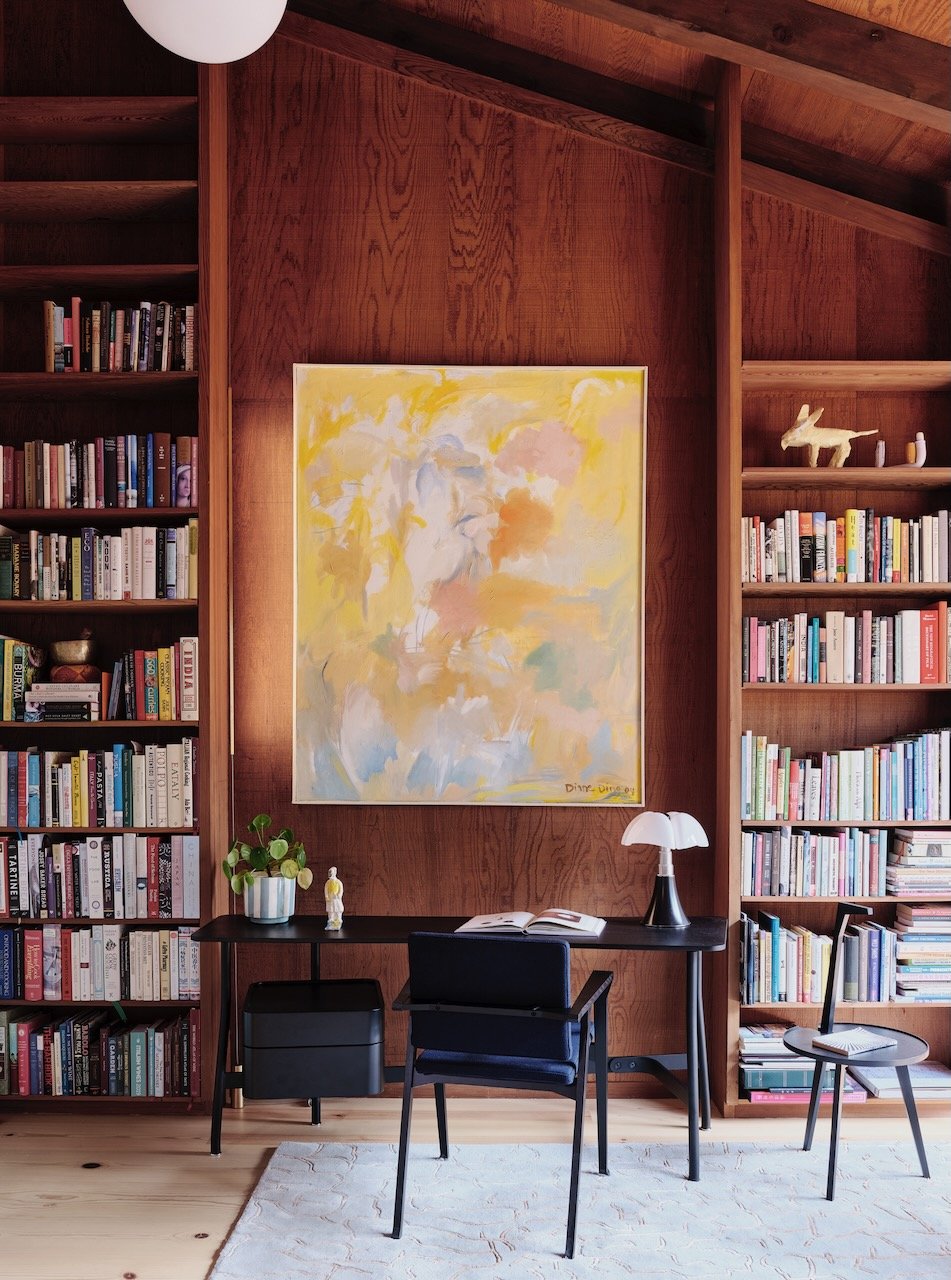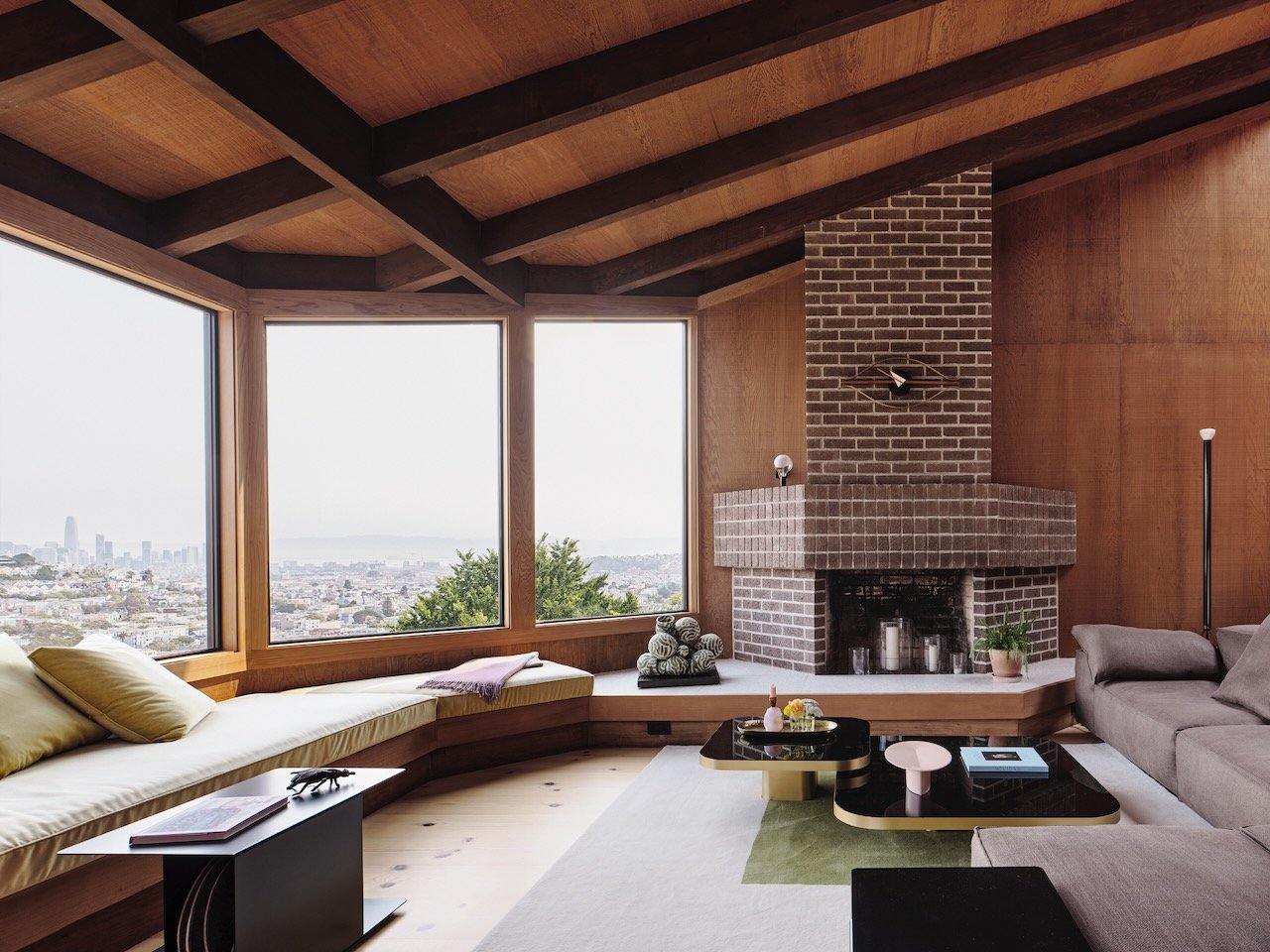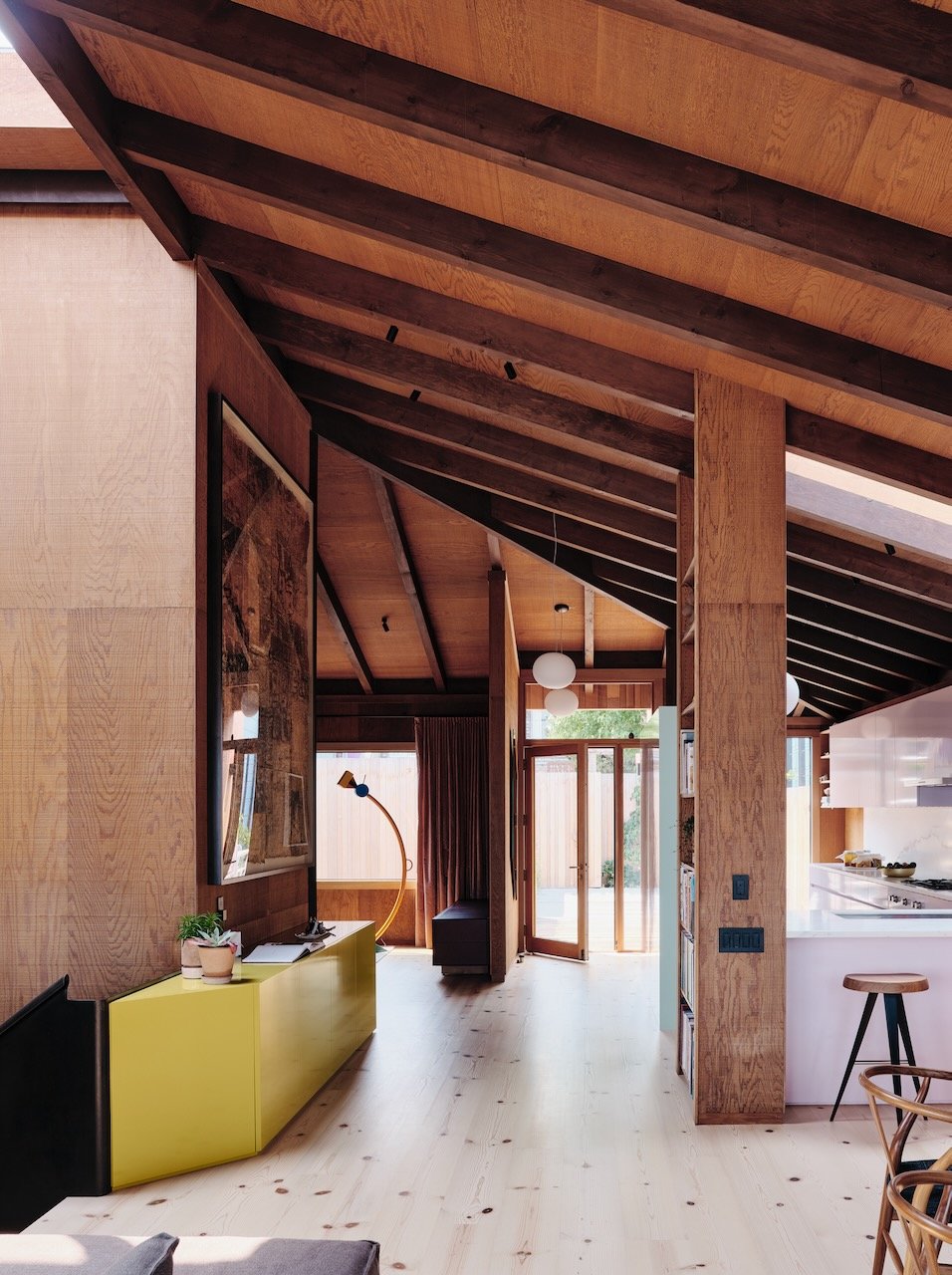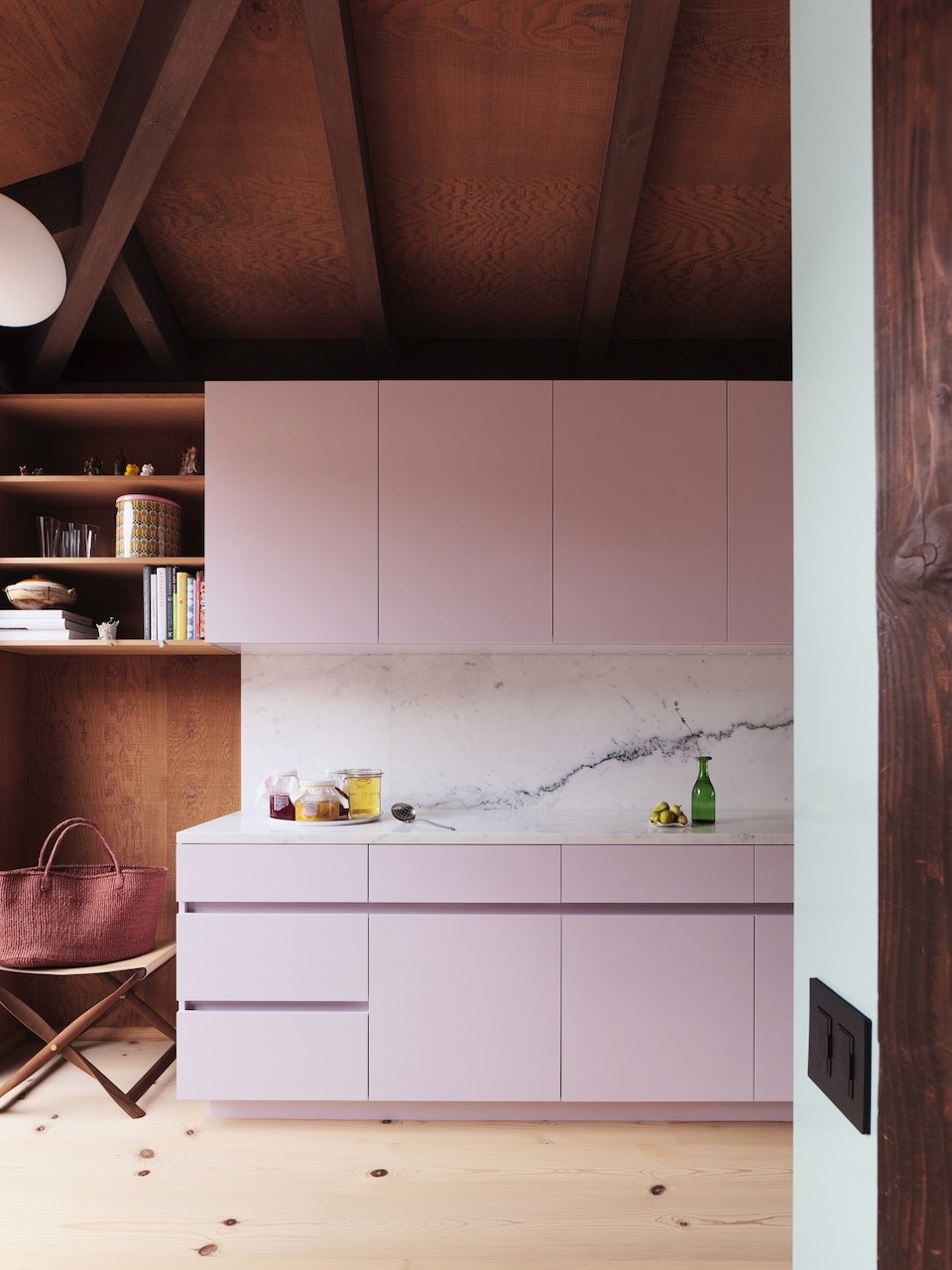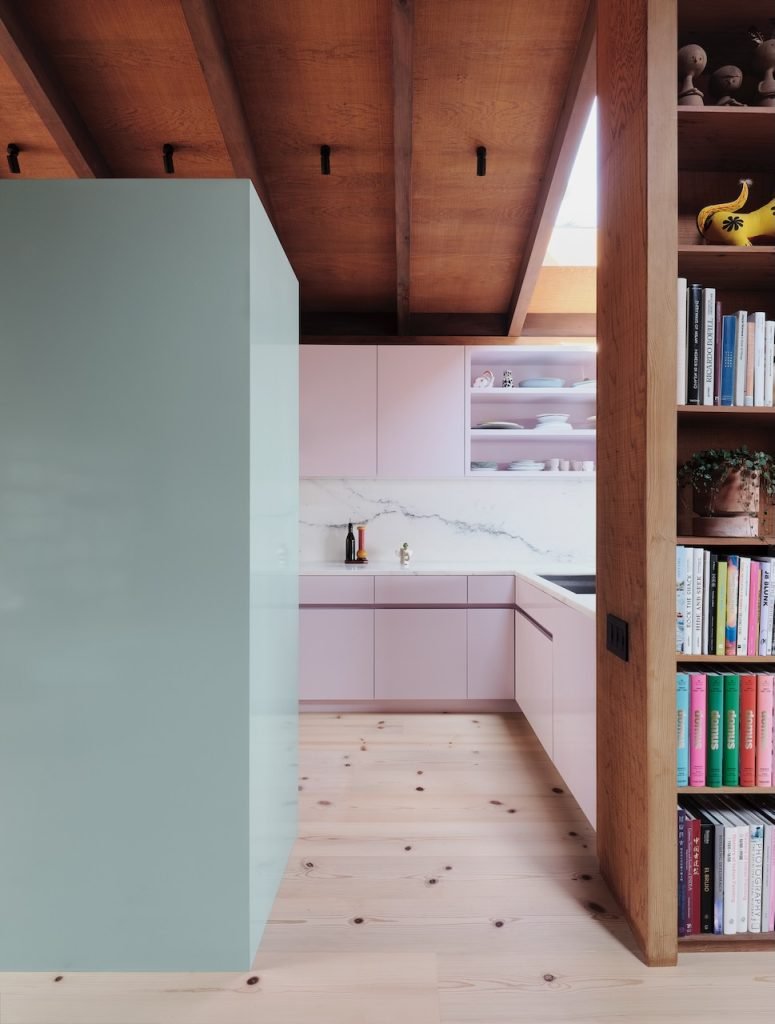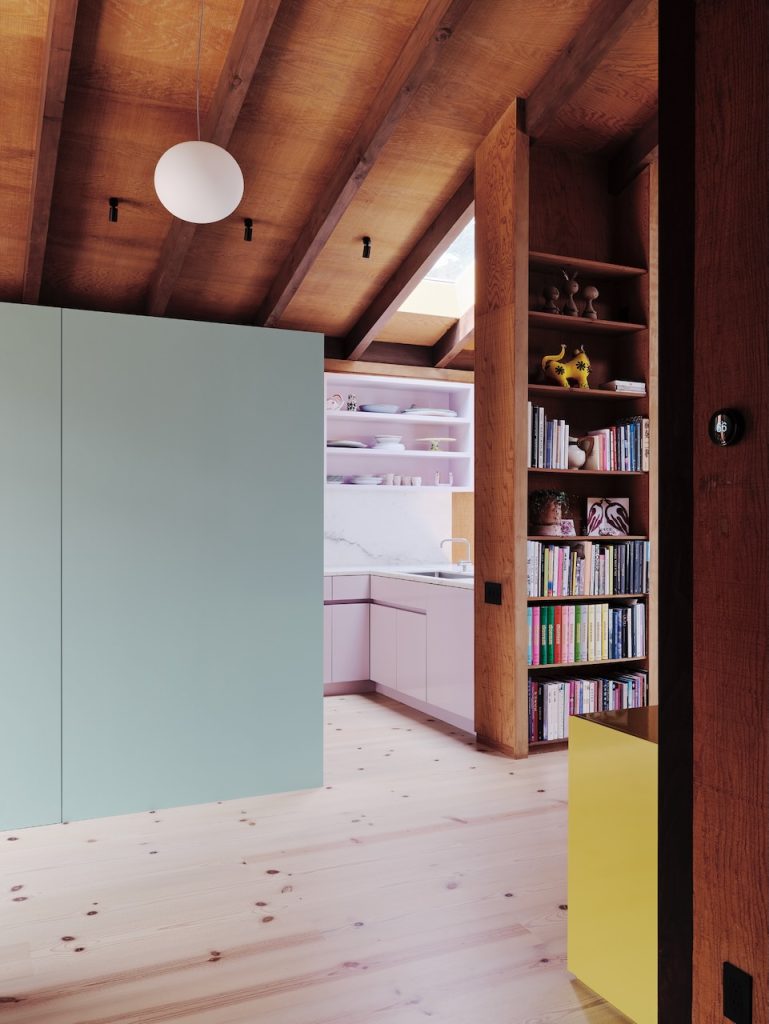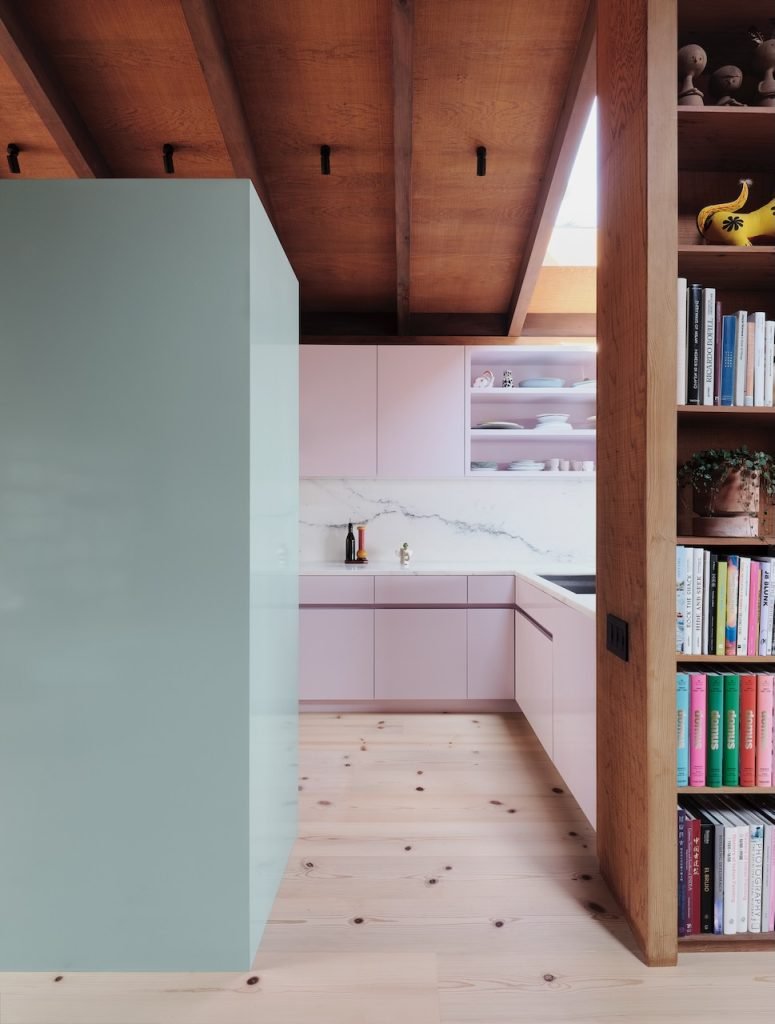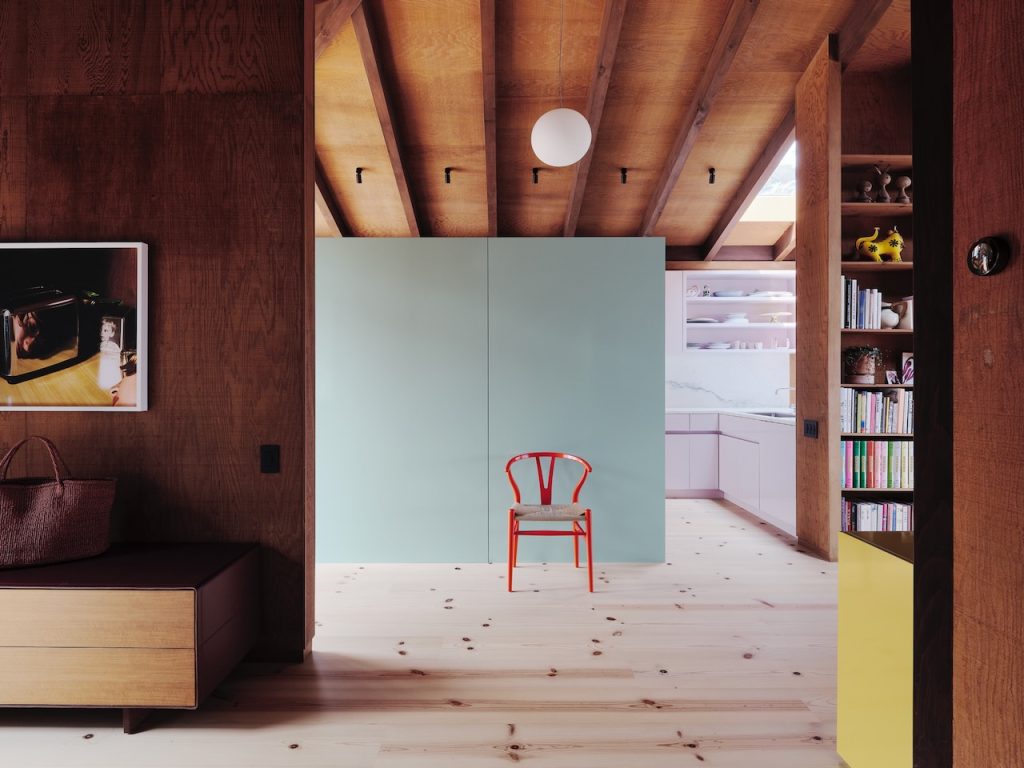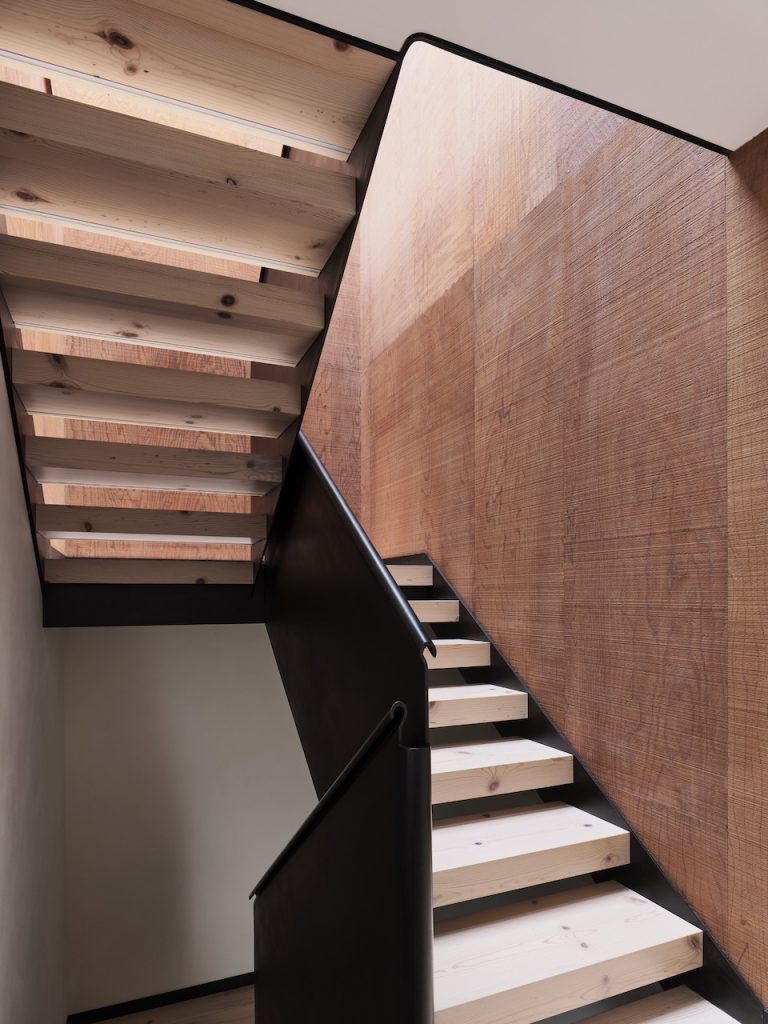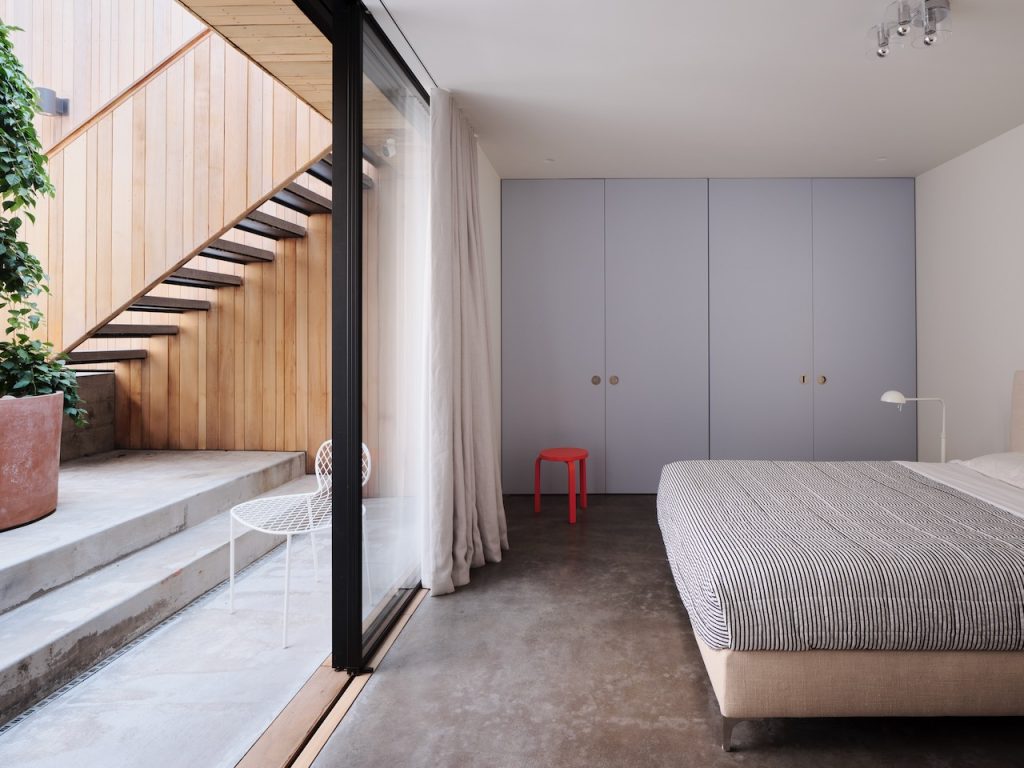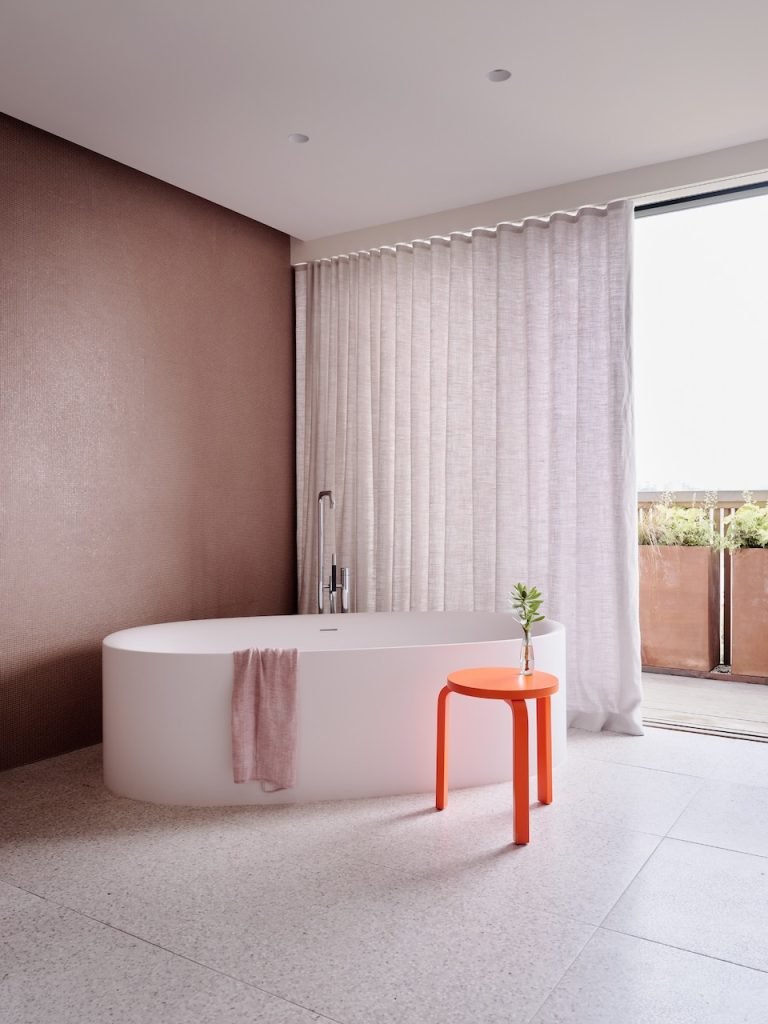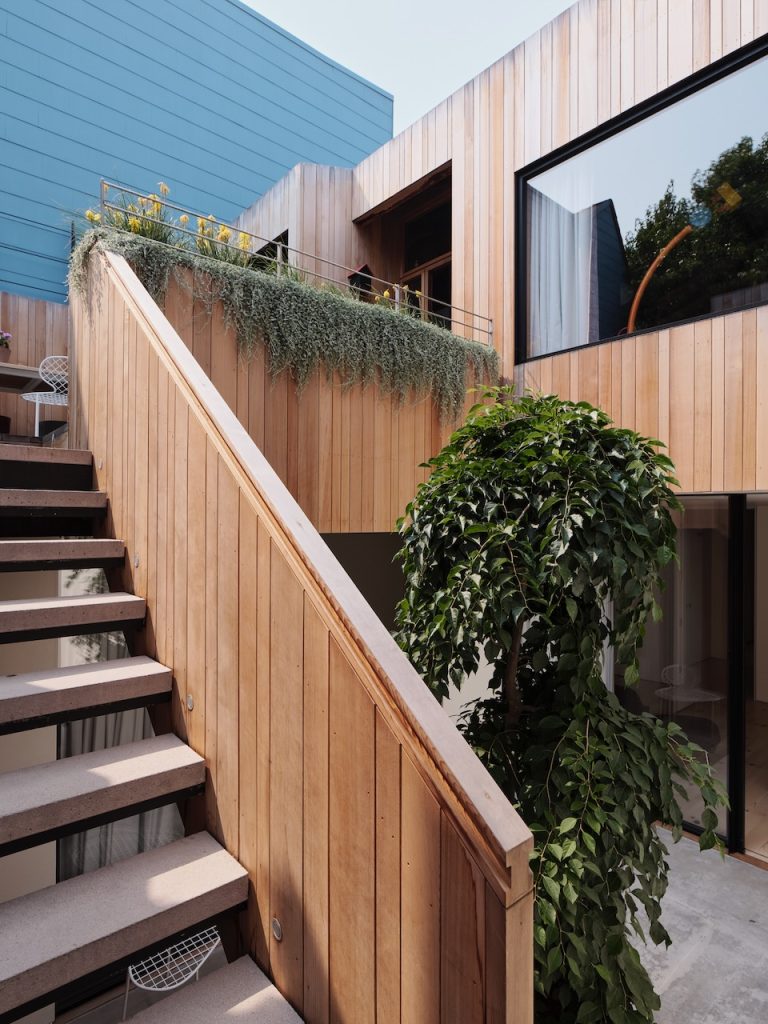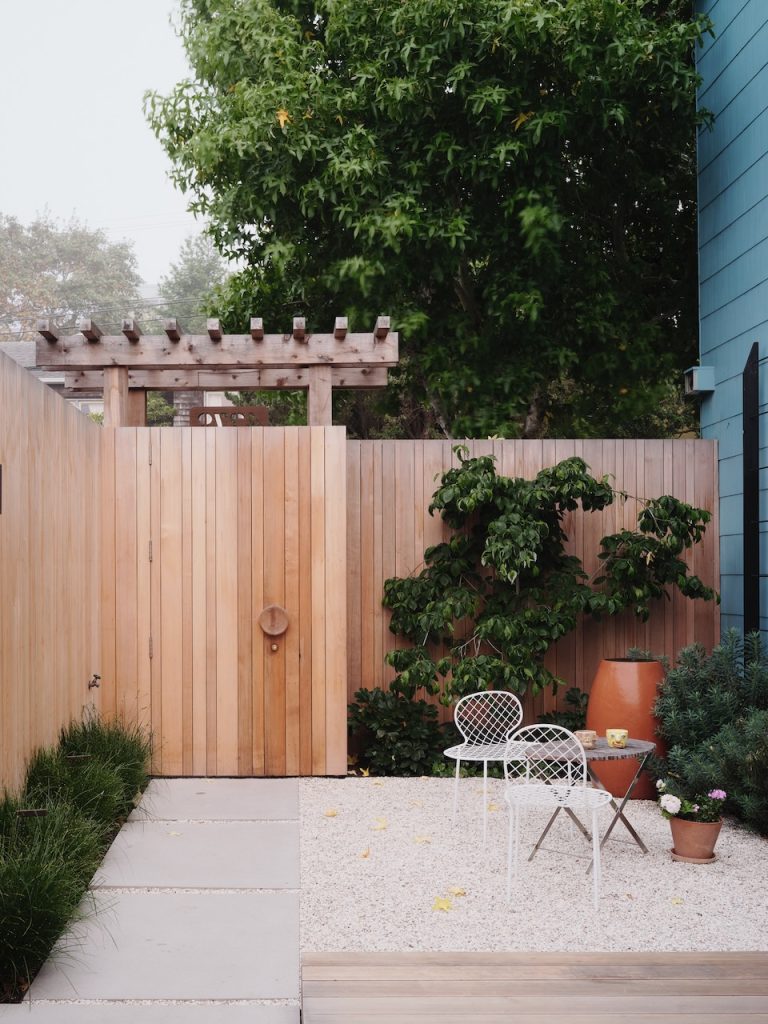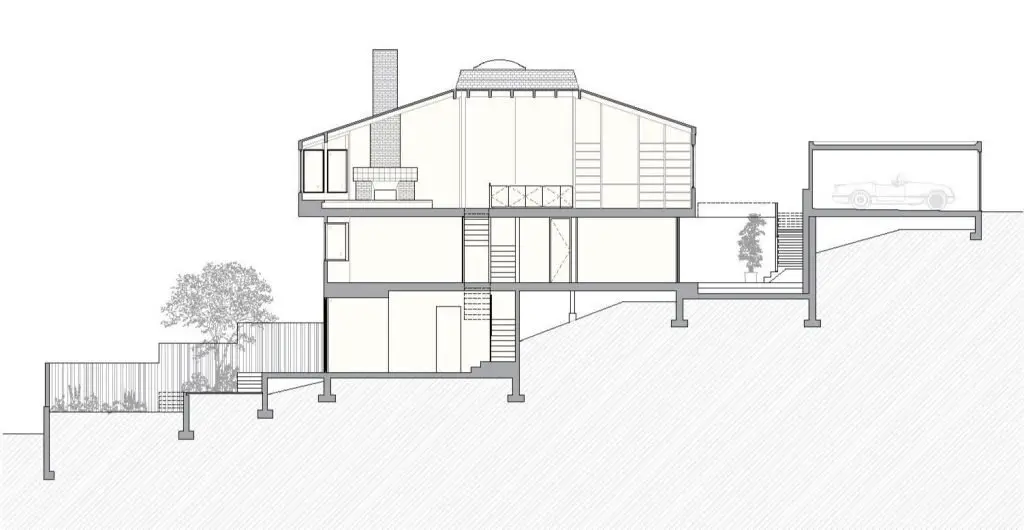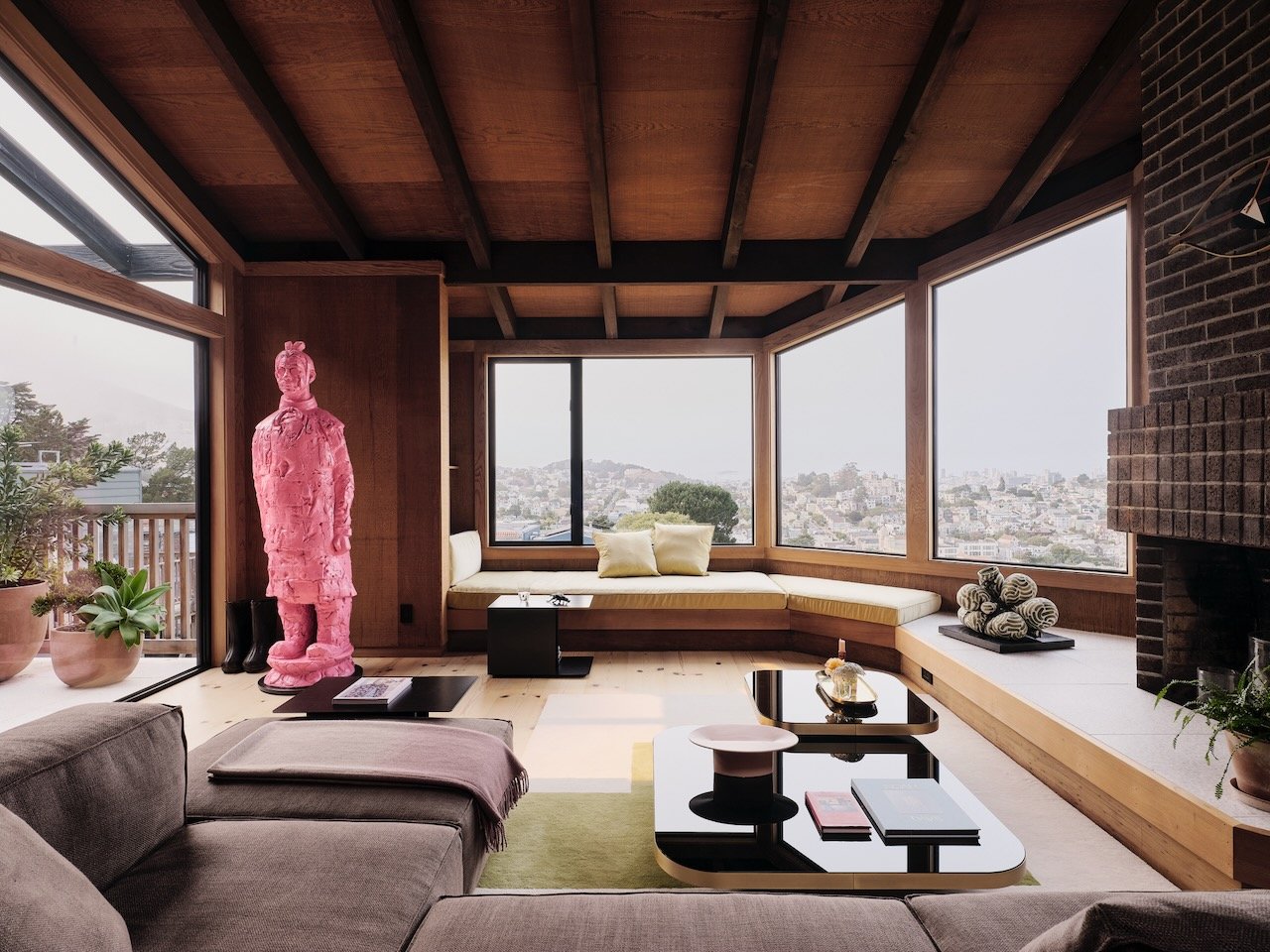
Originally designed in 1974 by local architect Albert Lanier—husband of renowned artist Ruth Asawa—this hillside home in San Francisco was recently reimagined by its current owners, a photographer and a tech engineer, and renovated by Studio Terpeluk. Having lived in the house for several years before undertaking any changes, the couple wanted to experience the space fully before deciding how to move forward with a renovation. Their approach was intentional: live in the home, understand its character, and then carefully enhance it.
The house featured many elements they had grown attached to, particularly its angular geometry, redwood interiors, and enclosed courtyards. However, other parts were in clear need of update and repair. Their goal was to increase the volume and livability of the house while maintaining its original architectural DNA. The renovation would not be a radical departure, but rather an evolution—one that balanced flow, light, and contemporary comfort with a strong respect for the original design.
“We wanted the renovation and expansion to harmonize with the original vibe of the house but elevate the living experience,” the owners said. They focused on curated details and materials, seeking to create a sense of lightness and continuity throughout the space.
The architectural response to this brief was one of restraint and precision. Rather than impose a new identity, the design aimed to open up existing spaces, improve circulation, and increase natural light and views. According to the design team, the intent was “to expand and surgically modify the house in an architecturally non-aggressive manner.” The result is a structure that feels both preserved and renewed.
One of the standout elements of the renovation is the new central stair—a sculptural form that connects the home’s three levels. Made of blackened steel and wood, the stair curves downward, creating a sense of continuity through the vertical space. “The steel was designed to imbue a sense of organic softness in an otherwise hard and cold material,” the architect explained. The stair not only serves a functional purpose but also adds a visual and spatial anchor to the interior.
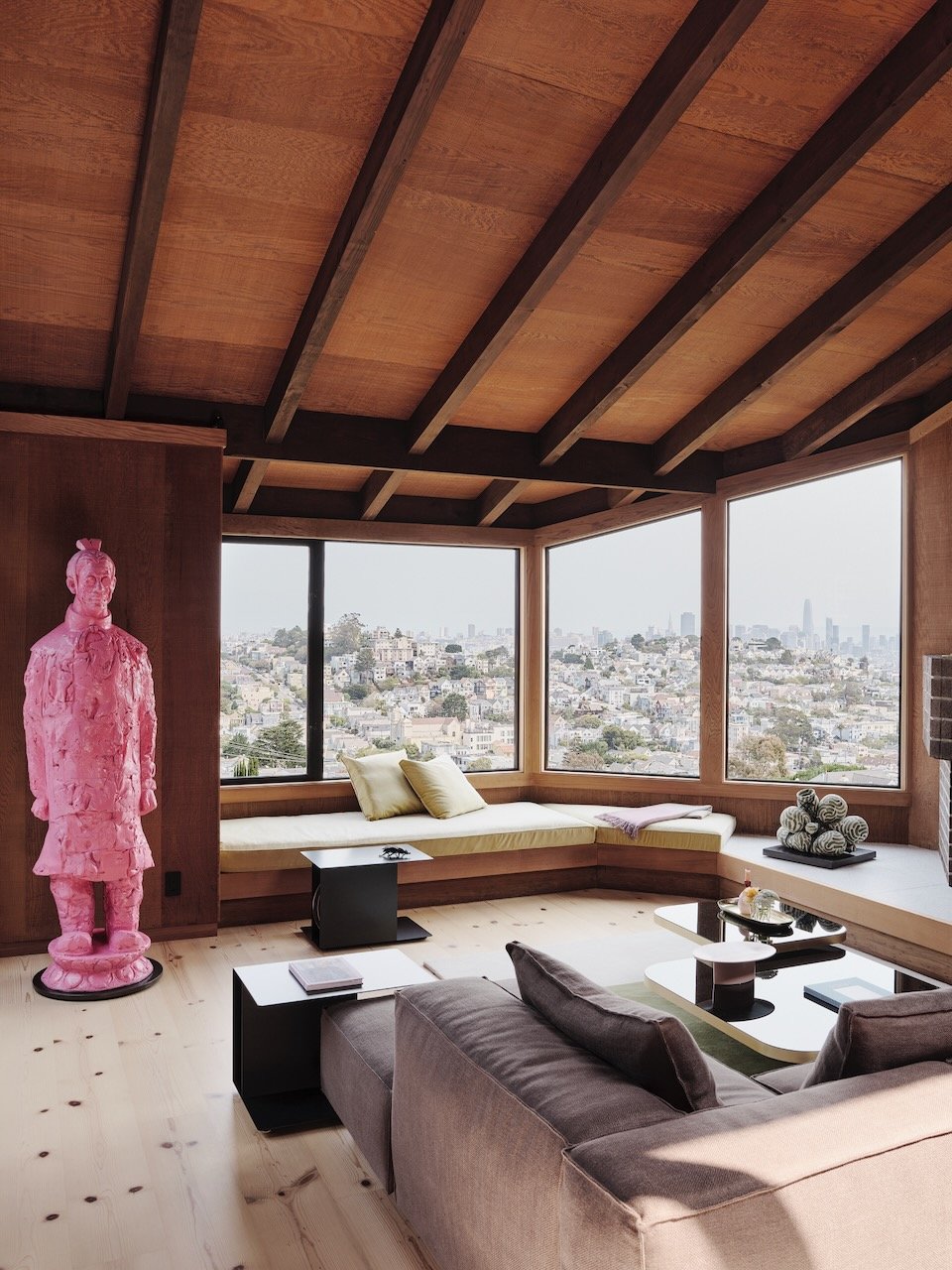
Materials played a key role in reinforcing the house’s connection to its original features and natural setting. Douglas fir flooring, fabricated from locally reclaimed pier pilings, was selected to contrast the darker redwood on the main level while softening the lighter levels below. Terrazzo, concrete, and gray marble were introduced as counterpoints to the warmth of the wood, creating a balance of tones and textures. Outside, the façades and courtyards were reclad in irregular western red cedar planks, reinforcing the home’s connection to its wooded surroundings.
The clients played an active role throughout the renovation, contributing not just to design decisions but also to furnishing and decoration. “They have impeccable taste,” the architect noted. “They provided thoughtful feedback and filled the space with beautiful and eclectic objects.”
Throughout the project, a clear focus remained on preserving what made the house special in the first place—particularly the vaulted redwood volume on the ground level and its visual connection to the outdoors. “All of the choices—colors, materials, details—were about reinforcing the power of that space and its relationship to the natural environment,” the architect said.

